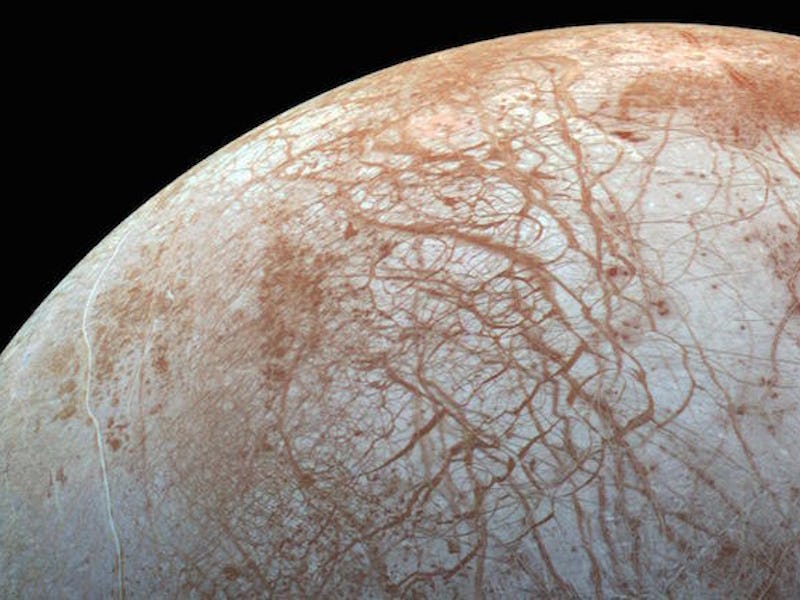New Findings Show Europa Is More Like Earth Than We Ever Knew
Important implications behind the potential for Jupiter's moon to host life.

There is only one rock scientists consider officially habitable in the solar system: Earth. It makes sense though: this planet is the only place with a proven record for encouraging the evolution of and providing a sustainable home for life. But that doesn’t mean those neighbors were always wastelands incapable of housing organisms. Lots of scientists, for instance, think Mars might have an ancient history of habitability when it was drenched in vast oceans and lakes.
Turns out there are a few other worlds in the universe that possess some qualities similar to Earth. Case in point: Jupiter’s moon Europa. A new study published in Geophysical Research Letters illustrates that the icy rock orbiting the solar system’s biggest gas giant could posses the chemical energy necessary to help jumpstart and encourage the growth of life.
Many experts believe Europa already houses a deep ocean of salty liquid water underneath the icy sheath the covers most of the surface. Obviously, any talk of water leads to speculation as to whether life could exist in that environment — or if perhaps it already does. In studying the ocean environments, scientists at NASA’s Jet Propulsion Laboratory in Pasadena, California assessed Europa’s potential for producing hydrogen and oxygen — two key ingredients for life as we know it — by a process called serpentinization (in which water percolates into crevices between mineral grains to react with the rock and form new minerals that release hydrogen as a byproduct). The new study found that those potentials were relatively comparable: oxygen production was roughly 10 times higher than hydrogen production.
The findings suggest Europa’s interior is actually quite similar to Earth’s. If conditions are right, there’s a potential to tap into those inherent traits and turn the icy moon into a habitable world.
What exactly would those conditions be? Funny you should ask: another study published this week recently predicted Europa (and other similar worlds in the solar system) might turn into a habitable planet in a few billion years when the sun grows up and balloons into a red giant.
Basically, a larger red sun might expose Europa to enough heat that the icy surface would melt, allowing liquid water to pool up and lead to an environment where organisms could grow and reproduce in relative stability.
There is no way to prove that latter scenario true unless we’re still around another couple billion years to see the sun evolve into a red giant (and obliterate Earth in the process). But as far as the potential for Europa’s salty sea to breed life, we can figure that out by sending a probe out to the moon to do some more detailed analysis. NASA wants to conduct such a mission sometime in the 2020s but it remains to be seen whether that mission will actually get off the ground — literally.